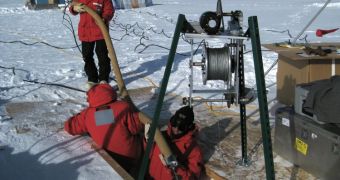For years, experts have been trying to explain why methane and ethane emissions dropped significantly at the end of the 20th century. Now, a study proposes that the phenomenon was caused by converting methane into an energy resource, which basically converted it into carbon dioxide.
While CO2 is the most pervasive greenhouse gas, methane is the most potent, as it has the ability to heat the atmosphere nearly 300 times faster than its counterpart. However, by the end of the last century, researchers noticed a drop in methane atmospheric emissions.
In order to analyze why that happened, the team turned to investigating ethane deposits in Antarctica and Greenland. This compound has been proven to have an origin in methane and it can generally be found in the upper layers of perennial ices in these regions.
The new paper, which is published in the August 11 issue of the top journal Nature, indicates that a change in our activities is responsible for the drop in methane emissions. In order to arrive at this conclusion, investigators looked at how ethane levels fluctuated in the atmosphere last century.
“Fossil fuels are a common source of both ethane and methane. Methane has many other sources, but we know most of the ethane in the atmosphere today is from fossil fuels. If ethane changes, it is easier to figure out the cause,” researcher Murat Aydin explains.
The investigator, who is based at the University of California in Irvine, is also the lead author of the new Nature paper. His team included UCI colleagues Kristal Verhulst, Eric Saltzman, Donald Blake, Qi Tang, and Michael Prather.
Researchers Mark Battle, from the Bowdoin College, and Stephen Montzka, from the US National Oceanic and Atmospheric Administration (NOAA) were also a part of the research team.
“After carbon dioxide, methane is the second most important greenhouse gas. This research was conducted to track ethane and to see what it could tell us about methane,” Aydin explains.
“We found that ethane emissions declined at the same time as the rise in methane dramatically slowed, suggesting a common cause,” he adds. According to the team, the shift occurred when – at the end of the 20th century – both methane and ethane were deemed valuable energy resources.
What this implies is that they began being collected and consumed as natural gas, which in turn converted them into CO2. “This research helps explain why atmospheric methane levels stabilized at the end of the twentieth century,” adds Eric Saltzman, a coauthor of the study.
“Methane levels are important for global climate and understanding how human activities affect methane is a key part of predicting how much warming we may expect in the future,” he explains.
“We still have more research to conduct, but this discovery is significant to our efforts in determining the link between ethane and methane and what it may tell us about climate change,” Julie Palais adds.
The expert holds an appointment as a US National Science Foundation (NSF) program director. “We must work together to continue to find ways to further our research on this very important subject,” she concludes.
Methane emissions were found to increase however, especially from natural sources. As the planet warms, tundra and permafrost are shaping up to be the most dangerous natural environments.
Vast amounts of methane is trapped in permanently-frozen soils around polar regions, but warming is causing the frost to clear, releasing the dangerous gas. This issue can only be addressed by measures meant to combat climate change as a general phenomenon.

 14 DAY TRIAL //
14 DAY TRIAL //